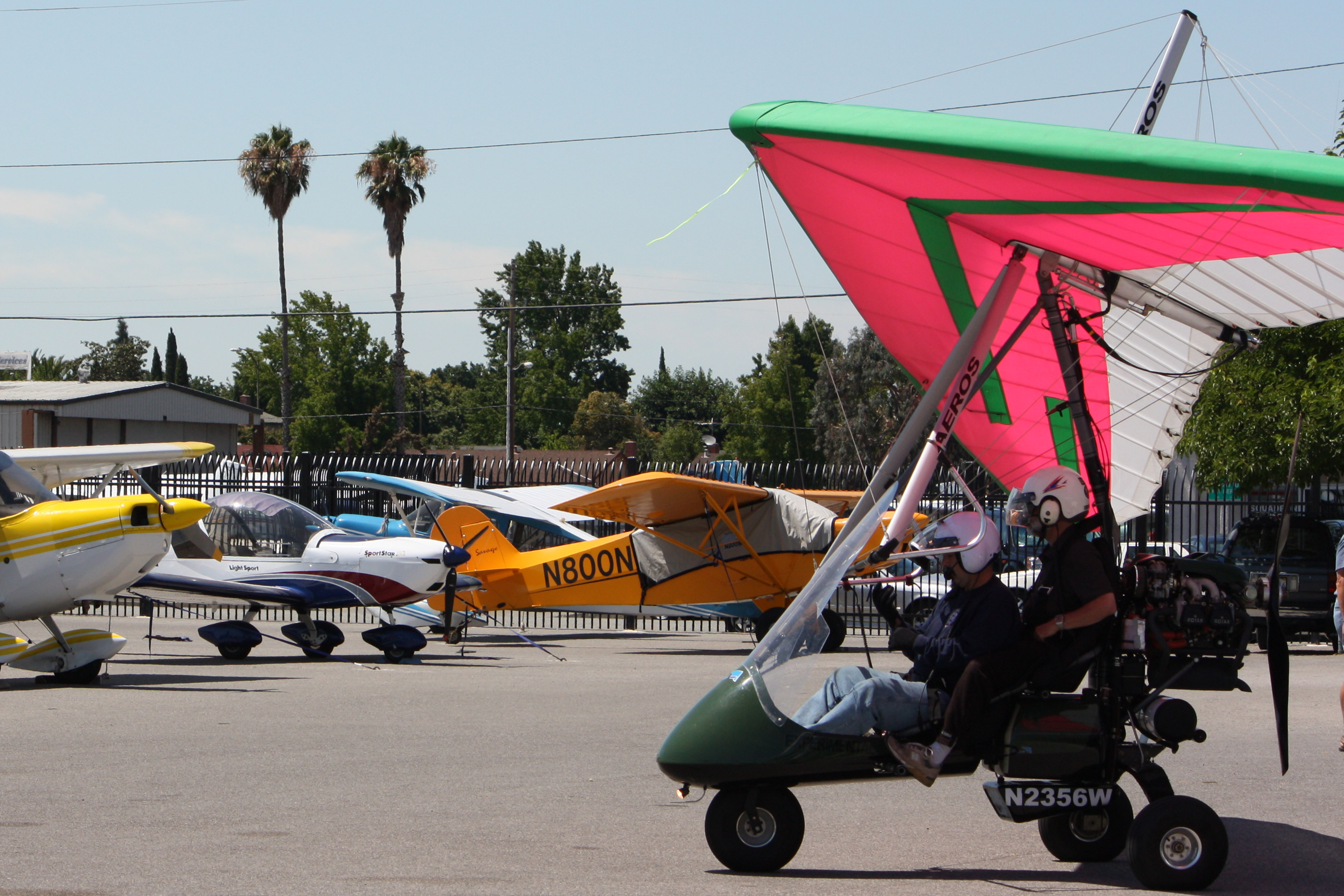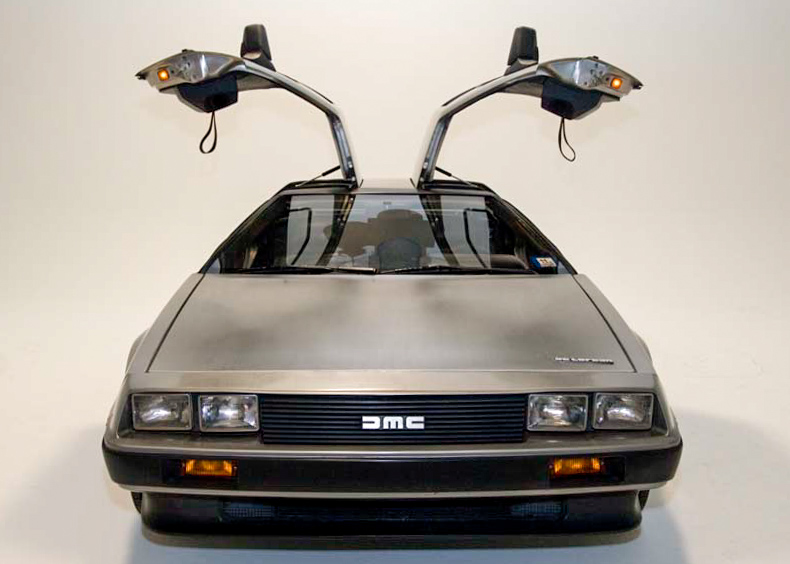|
Ikarus C42
The Ikarus C42 is a two-seat, fixed tricycle gear, general aviation microlight aircraft, manufactured in Germany by Comco Ikarus. It is used primarily for flight training, touring and personal flying. Design and development The Ikarus C42 is a single-engined high-wing monoplane with side-by-side seats for two in a wide cabin. The C42 is manufactured with either an Rotax 912 engine or a Rotax 912s engine. The Rotax engine has a low fuel consumption and relatively low noise. The engine drives the propeller, which has ground-adjustable pitch, through a gearbox with a 2.273:1 reduction ratio. The aircraft is structurally supported by a backbone of large diameter aluminium tube which runs the length of the aircraft. The cabin and fuselage shell is a composite material which, being non-structural, can be removed for inspection and repair. The wings are constructed of tubular front and rear spars. The wings and flying control surfaces are covered in Kevlar/Mylar/ Polyester ... [...More Info...] [...Related Items...] OR: [Wikipedia] [Google] [Baidu] |
Light-sport Aircraft
A light-sport aircraft (LSA), or light sport aircraft, is a fairly new category of small, lightweight aircraft that are simple to fly. LSAs tend to be heavier and more sophisticated than ultralight (aka "microlight") aircraft, but LSA restrictions on weight and performance separates the category from established GA aircraft. There is no standard worldwide description of an LSA . LSAs in different countries The civil aviation authorities in different countries have their own particular specifications and regulations which define the LSA category. For example, in Australia the Civil Aviation Safety Authority defines a light-sport aircraft as a heavier-than-air or lighter-than-air craft, other than a helicopter, with a maximum gross takeoff weight of not more than for lighter-than-air craft; for heavier-than-air craft not intended for operation on water; or for aircraft intended for operation on water. It must have a maximum stall speed of in landing configuration; a maximum ... [...More Info...] [...Related Items...] OR: [Wikipedia] [Google] [Baidu] |
Kevlar
Kevlar (para-aramid) is a strong, heat-resistant synthetic fiber, related to other aramids such as Nomex and Technora. Developed by Stephanie Kwolek at DuPont in 1965, the high-strength material was first used commercially in the early 1970s as a replacement for steel in racing tires. It is typically spun into ropes or fabric sheets that can be used as such, or as an ingredient in composite material components. Kevlar has many applications, ranging from bicycle tires and racing sails to bulletproof vests, all due to its high tensile strength-to-weight ratio; by this measure it is five times stronger than steel. It is also used to make modern marching drumheads that withstand high impact; and for mooring lines and other underwater applications. A similar fiber called Twaron with the same chemical structure was developed by Akzo in the 1970s; commercial production started in 1986, and Twaron is now manufactured by Teijin. History Poly-paraphenylene terephthalamide (K2 ... [...More Info...] [...Related Items...] OR: [Wikipedia] [Google] [Baidu] |
Dual Control (aviation)
{{disambig ...
Dual control can refer either to a concept in government, or a concept in airplane operation: * Dual control (politics) * Dual control (aviation) See also *Dual control stand *Dual control theory *Dual mandate A dual mandate is the practice in which elected officials serve in more than one elected or other public position simultaneously. This practice is sometimes known as double jobbing in Britain and ''cumul des mandats'' in France; not to be confused ... [...More Info...] [...Related Items...] OR: [Wikipedia] [Google] [Baidu] |
Motorcycle
A motorcycle (motorbike, bike, or trike (if three-wheeled)) is a two or three-wheeled motor vehicle steered by a handlebar. Motorcycle design varies greatly to suit a range of different purposes: long-distance travel, commuting, cruising, sport (including racing), and off-road riding. Motorcycling is riding a motorcycle and being involved in other related social activity such as joining a motorcycle club and attending motorcycle rallies. The 1885 Daimler Reitwagen made by Gottlieb Daimler and Wilhelm Maybach in Germany was the first internal combustion, petroleum-fueled motorcycle. In 1894, Hildebrand & Wolfmüller became the first series production motorcycle. Globally, motorcycles are comparably popular to cars as a method of transport. In 2021, approximately 58.6 million new motorcycles were sold around the world, fewer than the 66.7 million cars sold over the same period. In 2014, the three top motorcycle producers globally by volume were Honda (28%), Yamaha (17 ... [...More Info...] [...Related Items...] OR: [Wikipedia] [Google] [Baidu] |
Trim Tab
Trim tabs are small surfaces connected to the trailing edge of a larger control surface on a boat or aircraft, used to control the trim of the controls, i.e. to counteract hydro- or aerodynamic forces and stabilise the boat or aircraft in a particular desired attitude without the need for the operator to constantly apply a control force. This is done by adjusting the angle of the tab relative to the larger surface. Changing the setting of a trim tab adjusts the neutral or resting position of a control surface (such as an elevator or rudder). As the desired position of a control surface changes (corresponding mainly to different speeds), an adjustable trim tab will allow the operator to reduce the manual force required to maintain that position—to zero, if used correctly. Thus the trim tab acts as a servo tab. Because the center of pressure of the trim tab is farther away from the axis of rotation of the control surface than the center of pressure of the control surface, the ... [...More Info...] [...Related Items...] OR: [Wikipedia] [Google] [Baidu] |
Elevator (aircraft)
Elevators are flight control surfaces, usually at the rear of an aircraft, which control the aircraft's pitch, and therefore the angle of attack and the lift of the wing. The elevators are usually hinged to the tailplane or horizontal stabilizer. They may be the only pitch control surface present, and are sometimes located at the front of the aircraft (early airplanes) or integrated into a rear "all-moving tailplane", also called a slab elevator or stabilator. Elevator control effectiveness The elevator is a usable up and down system that controls the plane, horizontal stabilizer usually creates a ''downward'' force which balances the nose down moment created by the wing lift force, which typically applies at a point (the wing center of lift) situated aft of the airplane's center of gravity. The effects of drag and changing the engine thrust may also result in pitch moments that need to be compensated with the horizontal stabilizer. Both the horizontal stabilizer and ... [...More Info...] [...Related Items...] OR: [Wikipedia] [Google] [Baidu] |
Ailerons
An aileron (French for "little wing" or "fin") is a hinged flight control surface usually forming part of the trailing edge of each wing of a fixed-wing aircraft. Ailerons are used in pairs to control the aircraft in Flight dynamics, roll (or movement around the aircraft's Flight control surfaces#Longitudinal axis, longitudinal axis), which normally results in a change in flight path due to the tilting of the Lift (force), lift vector. Movement around this axis is called 'rolling' or 'banking'. Considerable controversy exists over credit for the invention of the aileron. The Wright brothers and Glenn Curtiss fought a years-long Wright brothers patent war, legal battle over the Wright patent of 1906, which described a method of wing-warping to achieve lateral control. The brothers prevailed in several court decisions which found that Curtiss's use of ailerons violated the Wright patent. Ultimately, the World War I, First World War compelled the U.S. Government to legislate a le ... [...More Info...] [...Related Items...] OR: [Wikipedia] [Google] [Baidu] |
Centre Stick
A centre stick (or center stick in the United States), or simply control stick is an aircraft cockpit arrangement where the control column (or joystick) is located in the center of the cockpit between the pilots or between the pilot's legs. Since the throttle controls are typically located to the left of the pilot, the right hand is used for the stick, although left-hand or both-hands operation is possible if required.Crane, Dale: ''Dictionary of Aeronautical Terms, third edition'', page 132. Aviation Supplies & Academics, 1997. . The centre stick is a part of an aircraft's flight control system and is typically linked to its ailerons and elevators, or alternatively to its elevons, by control rods or control cables on basic aircraft. On heavier, faster, more advanced aircraft the centre stick may also control power-assist modules. Modern aircraft centre sticks are also usually equipped with a number of electrical control switches within easy finger reach, in order to reduce the pi ... [...More Info...] [...Related Items...] OR: [Wikipedia] [Google] [Baidu] |
Ikarus C42 Instrument Panel
Icarus is a character in Greek mythology. Icarus or Ikarus may also refer to: People * Roger Squires (born 1932), crossword compiler who has used the pseudonym Icarus * Icarus (wrestler) (born 1982), wrestler with the Chikara organization Places * Icarus (island), in the Aegean Sea * Ikaros (Failaka Island), in the Persian Gulf Aviation Aircraft * Icarus I, Icarus II and Icarus V, series of rigid-wing hang gliders designed by Taras Kiceniuk, Jr. * Ikarus C42, a microlight aircraft * Ikarus IK-2, the most notable indigenous Yugoslav aircraft of the 1930s and World War II era * Icarus, a prototype space rescue vehicle tested by Aleksandr Serebrov Aviation businesses and organizations * Ikarus Drachen Tomas Pellicci, a German hang glider manufacturer * Icaro Air, an Ecuadorian airline * Icarus School, a military aviation academy * Icarus, a Greek airline that preceded Olympic Airlines * Ikarus, a Yugoslav aircraft manufacturer later renamed Ikarbus Other uses in aviation * ... [...More Info...] [...Related Items...] OR: [Wikipedia] [Google] [Baidu] |
Gull-wing Doors
In the automotive industry, a gull-wing door, also known as a falcon-wing door or an up-door, is a car door that is hinged at the roof rather than the side, as pioneered by Mercedes-Benz 300 SL, first as a race car in 1952 ( W194), and then as a production sports car in 1954. Opening upwards, the doors evoke the image of a seagull's wings. In French, they are (butterfly doors). The papillon door was designed by Jean Bugatti for the 1939 Type 64, 14 years before Mercedes-Benz produced its similar, famous 300 SL gullwing door. The papillon door is a precursor to the gullwing door, and is slightly different in its architecture, but is often overlooked when discussing gull-wing design. Conventional car doors are typically hinged at the front-facing edge of the door, with the door swinging outward horizontally. Apart from the Mercedes-Benz 300 SL of the mid-1950s, Mercedes-Benz SLS and the experimental Mercedes-Benz C111 of the early 1970s, the best-known examples of road-cars ... [...More Info...] [...Related Items...] OR: [Wikipedia] [Google] [Baidu] |
Wing Tip
A wing tip (or wingtip) is the part of the wing that is most distant from the fuselage of a fixed-wing aircraft. Because the wing tip shape influences the size and drag of the wingtip vortices, tip design has produced a diversity of shapes, including: * Squared-off * Aluminium tube bow * Rounded * Hoerner style * Winglets * Drooped tips * Raked wingtips * Tip tanks * Sails * Fences * End plates Winglets have become popular additions to high speed aircraft to increase fuel efficiency by reducing drag from wingtip vortices. In lower speed aircraft, the effect of the wingtip shape is less apparent, with only a marginal performance difference between round, square, and Hoerner style tips The slowest speed aircraft, STOL aircraft, may use wingtips to shape airflow for controllability at low airspeeds. Wing tips are also an expression of aircraft design style, so their shape may be influenced by marketing considerations as well as by aerodynamic requirements. Wing tips are ... [...More Info...] [...Related Items...] OR: [Wikipedia] [Google] [Baidu] |






.png)


